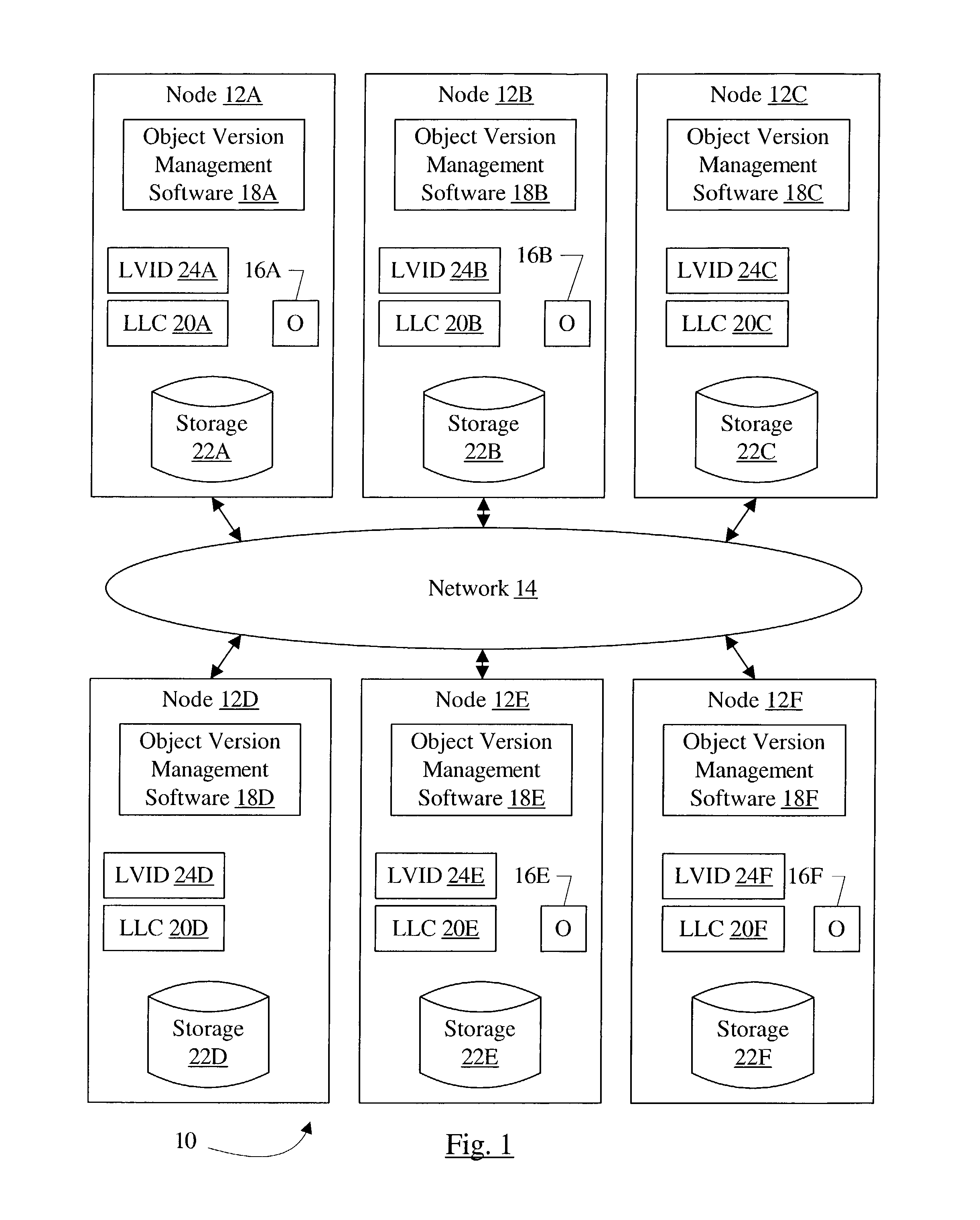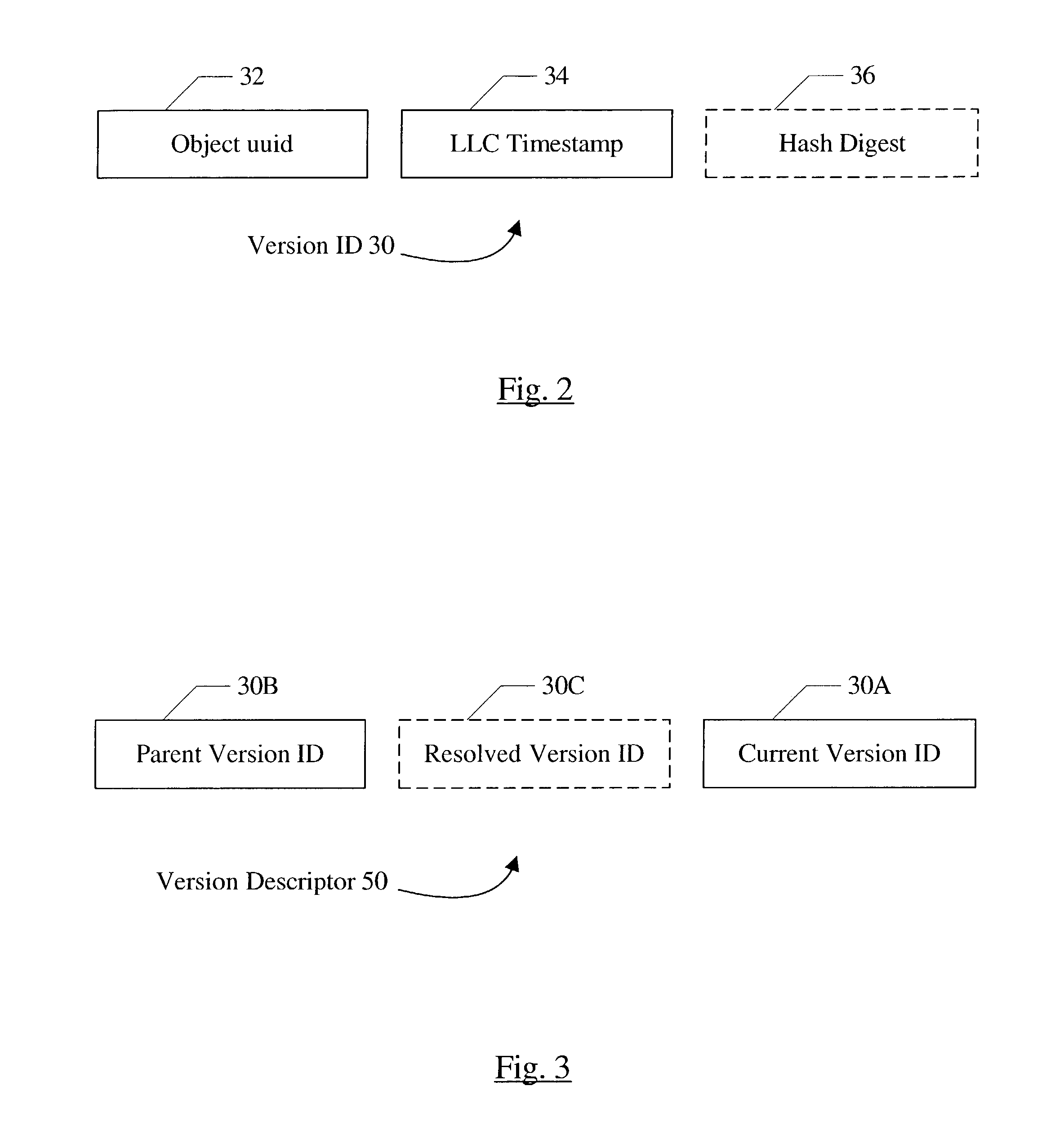Version upgrade via viral infection
a technology of viral infection and version upgrade, applied in the field of upgrading versions of objects, can solve the problems of affecting the transmission of other traffic, affecting the timing of update propagation, and delay in time of new version propagation
- Summary
- Abstract
- Description
- Claims
- Application Information
AI Technical Summary
Benefits of technology
Problems solved by technology
Method used
Image
Examples
Embodiment Construction
[0021]Turning now to FIG. 1, a block diagram of a system 10 including a plurality of nodes 12A-12F interconnected via a network 14 is shown. One or more of the nodes 12A-12F may have a version of an object O (e.g. reference numerals 16A, 16B, 16E, and 16F illustrated in nodes 12A, 12B, 12E, and 12F, respectively in FIG. 1). The versions in various nodes 12A-12F may be the same version, or one or more nodes 12A-12F may have different versions if a node or nodes has updated the object O.
[0022]Each of the nodes 12A-12F is configured to maintain one or more version identifiers (Version IDs). These version IDs are referred to herein as local version IDs (LVIDs) (e.g. LVIDs 24A-24F in FIG. 1). An LVID is the version ID for an object that identifies the version of the object within the node. Each LVID in a given node corresponds to a different object in that node.
[0023]The nodes 12A-12F communicate with each other using messages. Generally, a message may include any communication between t...
PUM
 Login to View More
Login to View More Abstract
Description
Claims
Application Information
 Login to View More
Login to View More - R&D
- Intellectual Property
- Life Sciences
- Materials
- Tech Scout
- Unparalleled Data Quality
- Higher Quality Content
- 60% Fewer Hallucinations
Browse by: Latest US Patents, China's latest patents, Technical Efficacy Thesaurus, Application Domain, Technology Topic, Popular Technical Reports.
© 2025 PatSnap. All rights reserved.Legal|Privacy policy|Modern Slavery Act Transparency Statement|Sitemap|About US| Contact US: help@patsnap.com



